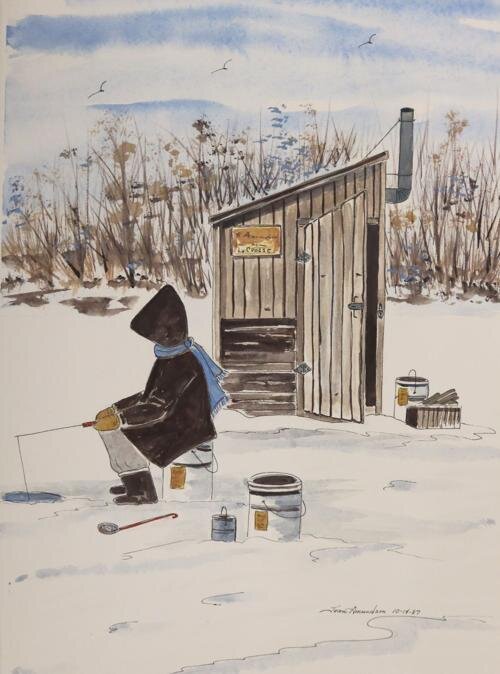Robert Mullen
Catalog Number: 1996.018.01
When Anton Bruha used this scale at his grocery store in 1930, he was selling bacon for 43 cents a pound, five pounds of flour for 23 cents, and 10 pounds of potatoes for 36 cents. The scale was probably the only one in the store and it was a necessity for Bruha’s business.
Today’s supermarkets still use scales to weigh foods in the produce, meat, and deli departments as well as at every check-out counter. Like today, many foods in 1930 were pre-packaged and pre-measured in cans, bottles, or boxes. But more items were sold in bulk, needing to be weighed on a scale. Besides meats and produce, early 20th century storekeepers like Bruha also weighed items like cookies, peanuts, candies, flour, and other food staples.
Anton J. Bruha began his small grocery store on the 900 block of Adams Street about 1885. The business would become a neighborhood fixture for the next 96 years, with his sons Joseph and Charles taking over the business in the 1950s.
During Bruha’s early years in business, his competition came from similar neighborhood grocers scattered across the city. The proprietors knew most of their customers; they lived nearby and walked two or three blocks to do their shopping. Clerks gathered the customers’ purchases for them, using the scale when necessary. Home delivery was common, as was “running a tab” to be paid later.
After the first national chain food stores came to La Crosse in the 1920s, Bruha and several other independent grocers formed a buying cooperative named “Selrite Foods” to broaden their purchasing power and meet the competition. Bruha was the original president of the organization and for many years oversaw its growth to some 45 stores in the La Crosse and Eau Claire areas.
The chain stores of the 1930s and 1940s and the newer, larger “supermarkets” of the 1950s forced independent grocers like Bruha to make changes to their businesses. While they remained small neighborhood stores, proprietors responded to the competition by becoming mostly self-service, stocking more pre-packaged items, and purchasing freezers to market frozen foods. Anton Bruha still offered home delivery service in the early 1950s, but after he died in 1955, his sons Joseph and Charles started to phase it out. By then, most people preferred to drive their cars to the bigger stores that had a larger selection, to gather a week’s supply of food in their grocery cart, and pay for the purchase in cash.
When the Bruha grocery store shut its doors for the last time in 1981, Anton’s son Charles was the sole proprietor. He was featured in a La Crosse Tribune article about the closing of the store. In the photo accompanying the story, the 83-year-old Charles was shown weighing some groceries on this early twentieth-century scale. Manufactured by the Detroit Automatic Scale Company, it is made of cast iron, brass, and glass and features a fan-shaped indicator, a balance arm and counterweight, and a wire basket for holding the customer’s purchase. This much-used scale was donated to the La Crosse County Historical Society by the Thomas C. Bruha family in 1996.
This article was originally published in the La Crosse Tribune on July 16, 2021.
This object can be viewed in our online collections database by clicking here.








